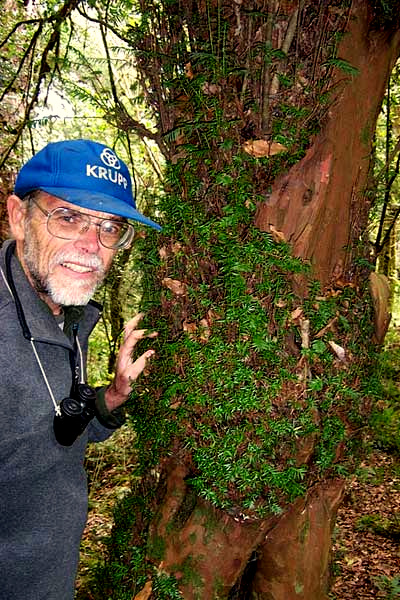Excerpts from Jim Conrad's
Naturalist Newsletter
from the February 2, 2007 Newsletter, notes from a visit to mountains south of Hwy 120 not far from the border with San Luis Potosí state, ~N21.27° W99.13°, at about 2000m (6600ft) in elevation, limestone bedrock; QUERÉTARO, MÉXICO
MEXICAN YEWS
I think of yews as dense, soft-stemmed, evergreen gymnosperms people plant around their homes, then snip into boxy shapes. Yews produce succulent, red, pea-sized fruits, the seeds of which are considered poisonous. Therefore, when Roberto told me that yews grow at Joya de Hielo I was visualizing a low, green shrub. Below, you can see me standing next to what turned up:

In that picture I'm standing next to the trunk of a Mexican Yew, TAXUS GLOBOSA. I'm there to show the trunk's size (and that look on my face is because of the cold). I'd never dreamed that a yew could be so big; and Roberto tells me that he knows where others much larger can be found.
The "Gymnosperm Database" says that Mexican Yews get up to 4.6 meters tall (15 feet). Our yews were much taller than that. Next time we visit the Joya we'll carry measuring devices and nominate our largest trees for the Big Tree Award.
Some authorities suggest that Mexican Yews and other yew species at home throughout the northern hemisphere are just varieties of one widely distributed, polymorphic species*.
Whatever the case, the doubt about the Mexican Yew's status as a distinct species shows how closely related it is to its more northern cousins, or maybe brothers. Probably this is another instance of all those Eastern-US forest plants surviving down here as relicts from the last Ice Age.